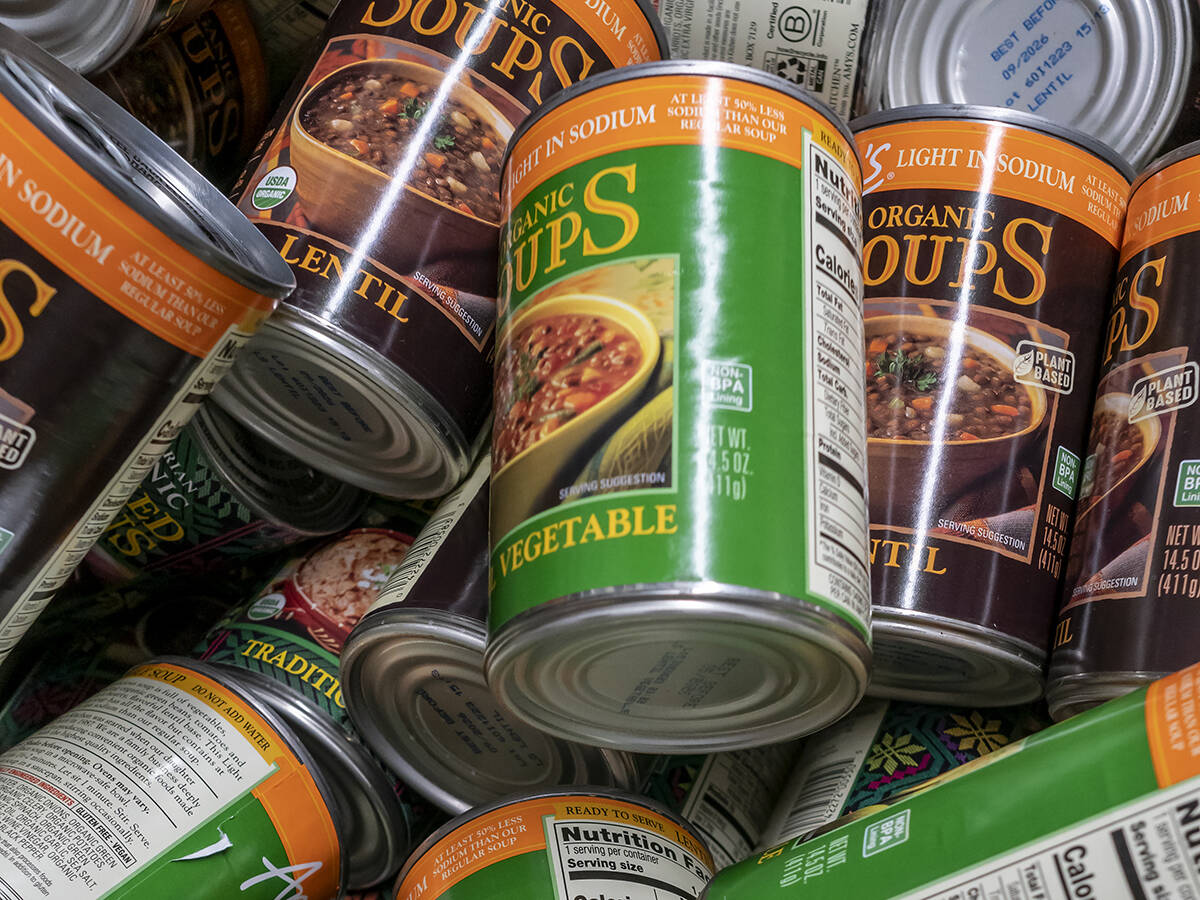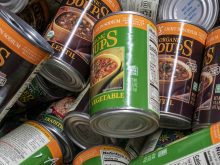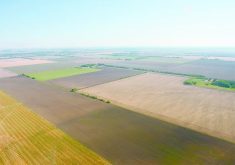As holidays are over, harvest time, back to school, and many other routines fall into place. Here is a quick, easy, well-used unbaked cookie recipe to send to the field, lunchbox or table.
Unbaked macaroons
In a large saucepan, place:
1Ú2 cup margarine 125 mL
1Ú2 cup milk 125 mL
11Ú2 cups white sugar 375 mL
Let come to a boil, and add:
1Ú3 cup cocoa 75 mL
stirring vigorously
3 cups rolled oats 750 mL
1 cup coconut 250 mL
Read Also

Sustainable food has ‘lost all meaning’: prof
That marketing strategy is deader than a doornail, says a University of Guelph professor who specializes in consumer preferences and perceptions of agriculture and food.
(optional)
1 teaspoon vanilla 5 mL
1Ú4 teaspoon salt 1 mL
walnuts or cherries (optional)
Cook for two minutes longer. Drop from spoon on waxed paper on a cookie sheet to set. This can also be made in a pyrex dish in the microwave.
Food hazard problems
As a consumer, a farmer and a director on the Canadian Farm Business Management Council, I am very aware of the relevance and importance of the Hazard Analysis Critical Control Point (HACCP) guidelines in the agri-food industry. These provide consumers with additional assurances about the safety and quality of Canadian products. The main goal is to keep the food safe as it goes from the farm to the table.
On-farm food safety
On-farm food safety is important to each one of us as producers and consumers. Over the past decade, food safety has emerged as one of the top consumer concerns. It is also a priority for governments and the agri-food industry in Canada and around the world.
Canadian farmers are meeting the food safety challenge facing their industry by developing new codes of practice. They are working with their industry partners and with governments to implement new gate to plate, farm to table approaches to food safety based on the internationally recognized principles of HACCP.
The system was developed by the Pillsbury Company in the 1960s to comply with NASA’s requirements for manned space flights. HACCP focuses first on identifying and then on reducing or eliminating potential safety hazards. These principles are now being applied at each stage of food production and are replacing old government methods based on sight, smell and touch.
How do you use HACCP?
HACCP is slated to become the standard accepted by all countries that are members of the World Trade Organization. The World Health Organization has set out seven principles to be rigorously followed in developing a HACCP plan. The principles are:
- Conduct a hazard analysis. Identify the hazards and prepare a list of steps in the process where significant hazards occur and describe the preventative measures. The main point is to assess and understand the hazards associated with products. The good management practices checklists and other materials developed by commodity associations will provide a starting point.
- Identify the critical control points in the production process that can be controlled to prevent, eliminate or reduce the hazards.
- Establish the critical limits that must be met to ensure the critical point is under control.
- Establish a system of regularly scheduled observations or tests to monitor each critical control point.
- Establish corrective action to be taken when monitoring indicates that a particular point is not under control.
- Establish procedures for verifying the HACCP system is working correctly.
- Establish effective record keeping procedures that document the HACCP system.
Why ensure food safety?
The reason for on-farm food safety is because of how fast word travels around the world. Consumers half a world apart react strongly to food safety problems, whether real or perceived. Markets quickly reflect the changes in consumer demand for particular products.
A few cases of food poisoning can tarnish a whole country’s reputation. Many countries, including Canada, put a ban on British beef because of mad cow disease. This temporarily closed British beef markets.
Food safety hazards
To keep our food and reputation safe we must know what the safety hazards are. There are physical, chemical and biological hazards that can pass from our farms into the food chain. Some of the obvious hazards are things like the tip of a needle breaking off during a vaccination and staying in the muscle. Others are more discreet and even invisible such as naturally occurring bacteria and antibiotic residue.
The major hazards are food-borne bacteria and the diseases they cause. Bacteria such as salmonella, campylobacter, listeria and eschericha coli (E.coli) are commonly found in the stomachs, intestines and feces of humans, livestock, poultry, dogs, cats, rats and other warm-blooded animals. They are carried by insects, found in water supplies and even in the soil and its products.
Some bacteria are beneficial, and can suppress the growth of harmful bacteria in our bodies and assist in digestion.
Some bacteria are pathogenic, causing disease in humans and on farms. The World Health Organization estimates contaminated food causes 70 percent of each year’s 1.5 billion cases of diarrhea and the deaths of three million children under the age of five. As producers, we must reduce or eliminate these threats.
Evidence suggests pathogenic bacteria are now becoming resistant to antibiotics and are putting customers, livestock and poultry at risk. These bacteria are very dangerous, even more so for seniors, young children, pregnant women and people who are sick or whose immune systems are already stressed. Although most unreported cases have flu-like symptoms, there are about two deaths for every 1,000 known cases of salmonellosis that are reported.
Other concerns are the presence of pesticides on fruit and vegetables and the residues of medications in meat, dairy products and eggs. There are regulations for the use of veterinary drugs and pesticides. But in Canada as well as other countries more care is given on the farm.
It is everyone’s problem
Food producers, processing plants, grocery stores, restaurants and the cooks at home all need to be concerned about food safety. Safety is now one of the qualities sought in a product.
The new challenge, in the agricultural industry, is to implement production practices at every stage from the renderers and feed manufacturers who supply inputs through to the breeders, primary producers, processors and food manufacturers, to ensure that the safest product possible moves to the final consumer.
Food safety programs, based on HACCP principles, can be put in place on any type of agricultural operation. Many producers have already made an excellent start by following the good husbandry practices set out in the existing poultry, dairy, swine and beef codes of practice and we are observing the requirements concerning the use of animal health products. When existing routines are combined with good management practices developed by national commodity organizations, producers can provide the assurances that products meet the highest quality standards.
The HACCP project was co-ordinated by the Canadian Federation of Agriculture with funding from the Canadian Farm Business Management Council. Also assisting in its development were representatives of the major national livestock and poultry organizations, plus people from the Ontario Agricultural Training Institute, the Canadian Feed Industry Association and officials of Agriculture and Agri-Food Canada.
For a copy of An Introduction to On-Farm Safety Practices, contact the farm business council at 613-237-9060 or fax 613-237-9330.















